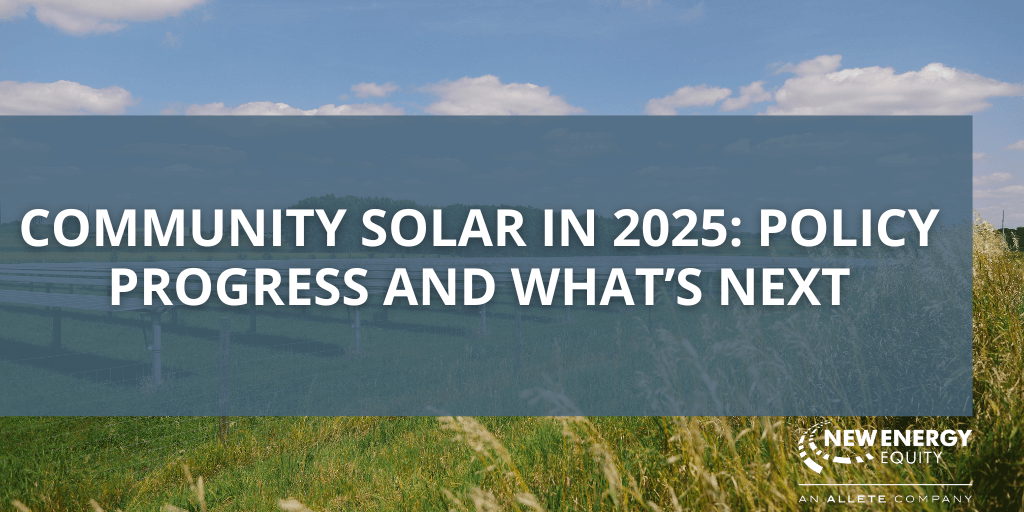New Energy Insights Blog

Community Solar in 2025: Policy Progress and What’s Next
By: Caresse Reid
Community solar is expanding nationwide, driven by federal incentives like the Inflation Reduction Act and the EPA's Solar for All program. States are also stepping up, with new policies and programs to boost access.
With these developments, 2025 is set to be a pivotal year for community solar growth across the U.S. Let’s take a look at the progress made on policies in 2024 and what we can expect in 2025.
Federal
There are several ongoing national energy policies that impact community solar development progress as we await the Trump administration transition in early 2025. Anti-dumping preliminary determinations for solar cells manufactured in Cambodia, Malaysia, Thailand, and Vietnam were issued. Prevailing wage and apprenticeship final regulation were issued, along with additional guidance on the domestic content bonus credit of the Inflation Reduction Act. The final rules for tech neutral guidance for the low-income communities bonus credit (now to be called clean electricity LI communities bonus credit amount) were submitted in December. Finally, the EPA is beginning to distribute financial awards to grant recipients of its Solar for All program.
Minnesota
SF 4942 passed in the 2024 session, establishing a cost-sharing fund to improve interconnection delays, and re-establishes an ombudsperson role at the PUC to manage interconnection issues. The end of 2024 marks the completion of the Department of Commerce’s (DOC) first year managing the low-to-moderate income community solar program, which will open with a new round of program capacity in 2025.
Illinois
On December 19th, the Illinois Commerce Commission (ICC) issued Final Orders approving the Multi-Year Integrated Grid Plans (MYGIP) for both ComEd and Ameren. Implementation for the plans, which aim to more cost effectively design their distribution system by supporting things like flexible interconnection arrangements, will progress into 2025. Work will also continue with the transition to a value-based distributed generation framework in 2025.
California
In their May 30th, 2024, Final Order, the California Public Utilities Commission (CPUC) outlined steps to create the new Community Renewable Energy Program (CREP). The CPUC, however, extended their statutory deadline for program implementation until the start of 2026. CREP is highly dependent on the allocation and issuance of federal solar for all grants.
Iowa
Community solar was introduced for the first time in the state under SF2356. Even though the bill ultimately didn’t pass, there was momentum that is expected to continue under a new bill introduced in the 2025 session.
New Mexico
The New Mexico Public Regulatory Commission (PRC) issued a Final Decision in November 2024, outlining terms for the final community solar bill credits that the investor-owned utilities filed in December. This long-awaited step will be crucial in understanding the long-term viability of the community solar program in New Mexico. The PRC also approved an additional 300 megawatts (MW) of capacity for the next phase of the program.
New York
The New York Solar Energy Industries Association (NYSEIA) published its 20x35 solar roadmap campaign, revamping New York's distributed solar energy goal to 20GW by 2035. NYSEIA continues to support community solar by working on initiatives related to interconnection, siting, and permitting reform.
Virginia
The Virginia State Corporation Commission, a regulatory agency in charge of utility matters, approved the modification and expansion of the state’s Shared Solar Program (the term for community solar that’s used in Virginia). This creates a program for Appalachian Power utility customers of 50MW, and expands the program for Dominion Energy customers to 200MW at first. An additional 150MW opens to Dominion customers once at least 90% of that 200MW has been subscribed to, with up to half of that expansion serving low-income customers.
Maryland
The permanent program regulations were adopted in August. This transitions the state program from a pilot to permanent program, allowing for a significantly more viable community solar market in Maryland. The program launches January 1, 2025, and the regulations will be officially effective in the spring of 2025. As part of the transition to a permanent program, Maryland state officials and industry stakeholders are working on the second phase of this regulatory design process, which centers around consolidated billing. These involve bill improvements and simplification resulting in transparency and predictability in costs and savings.
Developers now have the option to build combined projects larger than 5 megawatts or on adjacent parcels of land if built on rooftops, areas zoned for industrial use, parking lots, and brownfields. This utilizes land that would otherwise have a single use.
Massachusetts
S.2967 passed both houses of the legislature and was signed by the Governor on November 20. Encompassing a wide range of clean energy and carbon emission reduction-related policies and programs, it includes clean energy siting and permitting reform (small projects less than 25MW), net crediting, and an energy storage procurement target (5,000 MW by 2030). Based on a DOER straw proposal from July 2024, the SMART community solar program will likely be transitioning to an annual adjustable block and rate structure, with 300MW planned in both 2025 and 2026; the draft regulations are yet to be adopted.
